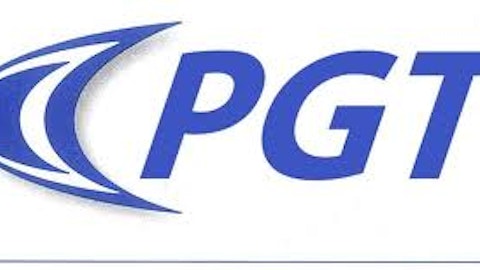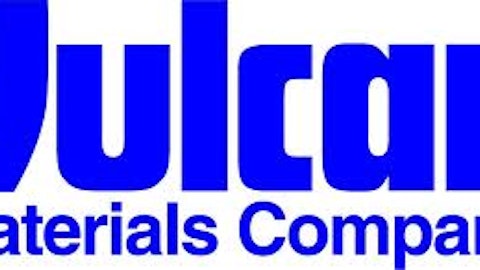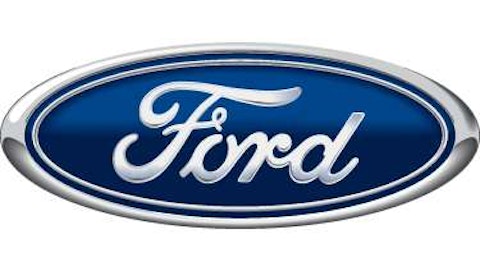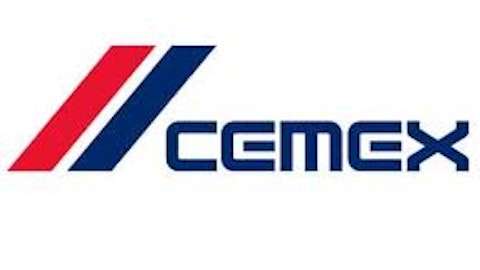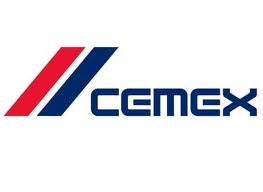
An improvement in balance sheet strength and the eventual recovery in global infrastructure demand will be the catalysts for a re-rating of Cemex SAB de CV (ADR) (NYSE:CX), one of the largest cement producers globally.
Why cement is a great business
Houses made of steel sound like a good idea, but the high cost of steel vis-à-vis cement will push construction costs and home prices through the roof. Also, the “not in my backyard” mentality of residents limits where new cement plants can be located, which adds to the difficulty of getting the relevant regulatory approvals from the authorities to start new plants. Moreover, every cement plant is equivalent to a natural geographic monopoly, due to the weight of cement that makes transportation over long distances uneconomical.
Lessons from the past
The nature of Cemex SAB de CV (ADR) (NYSE:CX)’s business lends itself to strong free cash flows, with cement plants typically requiring minimal maintenance capital expenditures once the plants are up. But Cemex chose to act like a leveraged buyout (LBO) firm. Historically, Cemex used its free cash flow to borrow heavily to finance acquisitions. Put debt and acquisition-driven growth together and you have the perfect recipe for disaster. The music eventually stopped playing for Cemex SAB de CV (ADR) (NYSE:CX) during the global financial crisis (GFC) in 2008. Cemex had to refinance its huge debt load at higher interest rates and with more restrictive debt convenants to stay afloat.
The future will reward patient investors
There are two major reasons why I am positive on Cemex for the mid-to-long term.
Firstly, based on its most recent 20-F, Cemex SAB de CV (ADR) (NYSE:CX) has improved on its key financial health indicators. Its leverage ratio fell from 7.4 in 2010 to 5.4 in 2012; while the coverage ratio also increased from 1.9 to 2.1. Current ratios are well inline with debt covenants.
Refinancing risks are also mitigated with average debt maturity having increased from an average of 3.8 years in 2011 to five years in 2012. I am cautiously optimistic on Cemex meeting its targeted leverage ratio of below three times by 2016, which will reduce cost of capital and lead to a re-rating of the stock.
Secondly, infrastructure is something that can be deferred in the short term, but needs to built or rebuilt for developing and developed markets respectively at some point in time. Being globally diversified with operations in the U.S., South America, Europe and Asia, Cemex is the best proxy for the long-term secular trend of global infrastructure growth.
Peer comparison
Cemex’s peers include Martin Marietta Materials, Inc. (NYSE:MLM) and Vulcan Materials Company (NYSE:VMC). On a trailing-12 months EV/EBITDA basis, Cemex SAB de CV (ADR) (NYSE:CX) is the most undervalued with a EV/EBITDA of 10.5 times. In contrast, Martin Marietta Materials, Inc. (NYSE:MLM) and Vulcan Materials Company (NYSE:VMC) are valued by the market at 18.6 and 24.2 times. Using the debt-to-equity ratio as a gauge, Martin Marietta Materials, Inc. (NYSE:MLM) and Vulcan Materials Company (NYSE:VMC) have gearings of about 70%, half that of Cemex SAB de CV (ADR) (NYSE:CX).
Martin Marietta is the second-largest domestic construction-aggregates producer. Its top-five revenue contributing states, Texas, North Carolina, Iowa, Georgia and South Carolina, accounted for more than half of its turnover. It has targeted San Antonio and Colorado for its geographic expansion plans, with the aim of being among the top-two market players in these two places.
In addition to its core business of the quarrying of stone, sand and gravel, it also derived about 11% of its fiscal 2012 revenue from specialty products such as magnesia-based chemicals and dolomitic lime. Its specialty products segment registered record profitability in the first quarter of fiscal 2013, on the back of increased capacity from its new kiln in Woodville, Ohio. It is the only stock among the three with a yield of any significance at 1.5%, backed by a solid 10-year profitability and a positive free cash flow track record.
Vulcan Materials is the largest producer of construction aggregates in the U.S. Its key advantage lies in its geographical location of its quarries, which allow it to meet demand for aggregates in markets with limited reserves. It has more than 300 facilities located in 18 of the top 25 most densely populated areas in the country.
Refinancing is not an issue for Vulcan Materials, as it has sufficient liquidity, with close to $190 million of cash and $500 million of un-drawn credit lines, to meet the maturing of about $300 million of debt over the next three years. Vulcan Materials cut its annual dividend from $0.76 per share in fiscal 2011 to $0.04 per share in 2012, but expressed its intention to restore dividends to a more meaningful level during its fourth-quarter fiscal 2012 earnings conference call.
While management did not indicate any timeline for the lifting of its dividend, I am optimistic, given Vulcan Materials’ continued positive free cash flow generation for the trailing-12 months, and a manageable gearing below 70%.
Conclusion
Most of the times, the best company might not be the best investment. If everyone knows a stock is a quality company, it is usually priced to perfection with no opportunity for share price upside. Cemex SAB de CV (ADR) (NYSE:CX) remains the best way to play the recovery of global infrastructure demand, given its geographical scope. In addition, it should see its share price re-rate upwards, as the market rewards it for its reduced credit risk with the gradual strengthening of the balance sheet.
The article Cement Your Position in This Stock originally appeared on Fool.com and is written by Mark Lin.
Mark Lin has no position in any stocks mentioned. The Motley Fool has no position in any of the stocks mentioned. Mark is a member of The Motley Fool Blog Network — entries represent the personal opinion of the blogger and are not formally edited.
Copyright © 1995 – 2013 The Motley Fool, LLC. All rights reserved. The Motley Fool has a disclosure policy.
